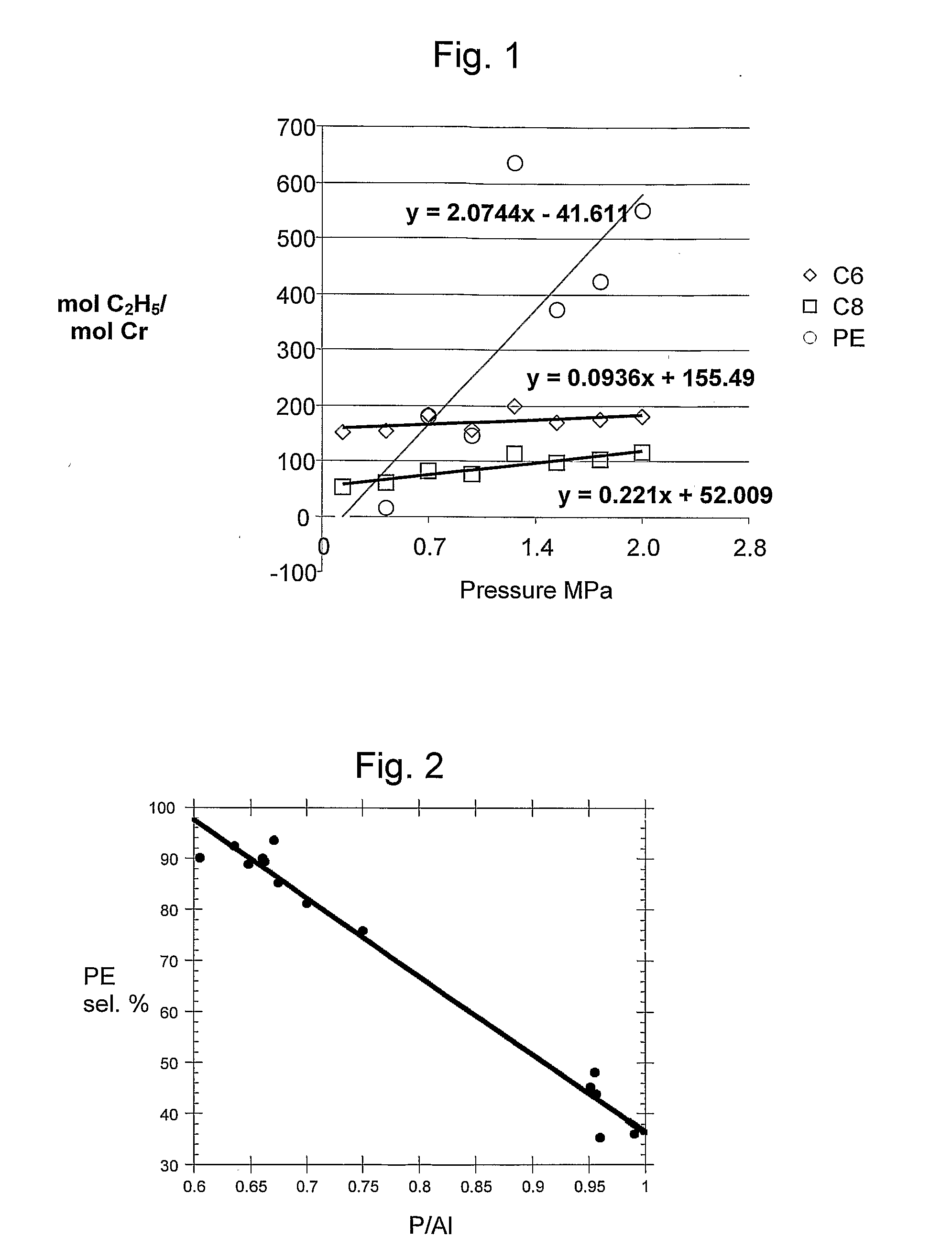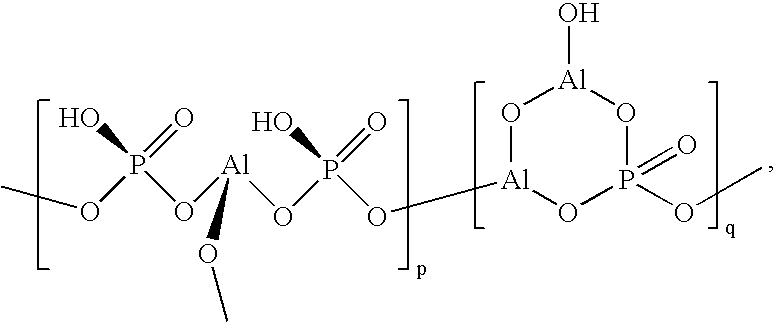Aluminum phosphate-supported group 6 metal amide catalysts for oligomerization of ethylene
- Summary
- Abstract
- Description
- Claims
- Application Information
AI Technical Summary
Problems solved by technology
Method used
Image
Examples
example 1
[0062] An automated pressure reactor comprising eight pressure cells with a working liquid volume of each cell of 6 mL is used to prepare ethylene oligomerization and polymerization products. The ethylene is polymer grade and is further purified by passing through an Oxyclear™ purifier (Labclear, Oakland Calif.) and a cylinder of activated molecular sieves (40 nm pore size). Each of the eight glass inserts is charged with 100 mg of AlPO-1 having a particle size between 120 and 230 mesh (125-63 μm) and placed in a 200° C. oven overnight. The tubes are inserted into the pressure cells in the pressure reactor located in a dry box. To each tube is added sequentially 4.9 mL heptane, 0.8 mL of a 0.01 M heptane solution of chromium (III) tris(bis(trimethylsilyl)amide) (8 μmol Cr), and 40 mg nonane (internal standard). These mixtures are heated to 40° C. with stirring for 30 minutes. In all cases, the supernatant is a pale green color indicating incomplete deposition of the Cr compound. To ...
examples 2-5
[0063] The reaction conditions of Example 1 are substantially repeated using different hydrocarbyl aluminum activator compounds (trimethylaluminum (TMA), triisobutylaluminum (TiBA), triethylaluminum (TEAL) and triisobutylaluminum modified methylalumoxane (MMAO)) in a 4:1 molar ratio to chromium (III) tris(bis(trimethylsilyl)amide) catalyst. Reactions are conducted at 70° C., 100 psi (700 kPa) ethylene, for 60 minutes. Essentially no 1-butene nor 1-decene are detected in the product mixture. Results are shown in Table 1.
TABLE 1octene / TOTOTOoctene +Ex.activator1-hexene1-octenePEPolymer %hexene2TMA507227607450.313TiBA481235839540.334TEAL385186732560.325MMAO375163714570.30
bturnovers, moles C2H4 / moles Cr
Polymer Composition
[0064] Polymer prepared according to Example 4 is analyzed by differential scanning calorimetry (DSC), liquid chromatography (GPC) and 13C NMR. 13C NMR indicates that 1-hexene is incorporated into the polymer, but no substantial amount of octene is incorporated res...
examples 6-17
[0065] A number of chromium (III) compounds are tested using AlPO-1 support. Compounds tested are: chromium (IV) tetrakis(t-butoxide), chromium (IV) tetrakis(trimethylsilylmethyl), chromium (III) tris(3,5-heptandionate), chromium (III) tris(2-ethylhexanoate), chromium(II) bis(diphenyl-amide)(THF)2, chromium (III) trisdi(cyclohexyl)amide, chromium (III) trisdi(isopropyl)amide), chromium (III) trisdi(ethyl)amide, and chromium (III) tris(di(trimethylsilylamide). Results are contained in Table 2a for reactions conducted at 70° C. and 100 psi (700 MPa), 4 equivalent of TiBA activator, heptane solvent and in Table 2b for reactions conducted using 0.35 percent Cr on AlPO-1, at 40° C., 150 psi (1.0 MPa) using 4 equivalents of TEAL activator and heptane solvent.
TABLE 2aEx.Chromium sourceAl / CraTO hexenebTO octenebTO PEbPE %C8 / C66Cr(IV)(t-butoxide)44194746286960.387Cr(IV)(CH2TMS)441601476902960.928Cr(III)(3,5-heptandionate)341751144518940.659Cr(III)(2-ethylhexanoate)3467431643940.6410Cr(NPh2...
PUM
| Property | Measurement | Unit |
|---|---|---|
| Fraction | aaaaa | aaaaa |
| Fraction | aaaaa | aaaaa |
| Temperature | aaaaa | aaaaa |
Abstract
Description
Claims
Application Information
 Login to View More
Login to View More - R&D
- Intellectual Property
- Life Sciences
- Materials
- Tech Scout
- Unparalleled Data Quality
- Higher Quality Content
- 60% Fewer Hallucinations
Browse by: Latest US Patents, China's latest patents, Technical Efficacy Thesaurus, Application Domain, Technology Topic, Popular Technical Reports.
© 2025 PatSnap. All rights reserved.Legal|Privacy policy|Modern Slavery Act Transparency Statement|Sitemap|About US| Contact US: help@patsnap.com


